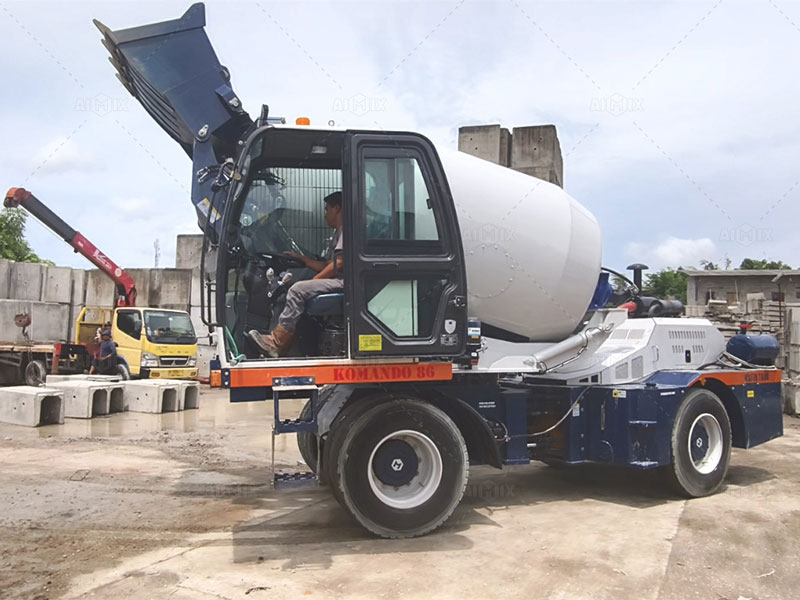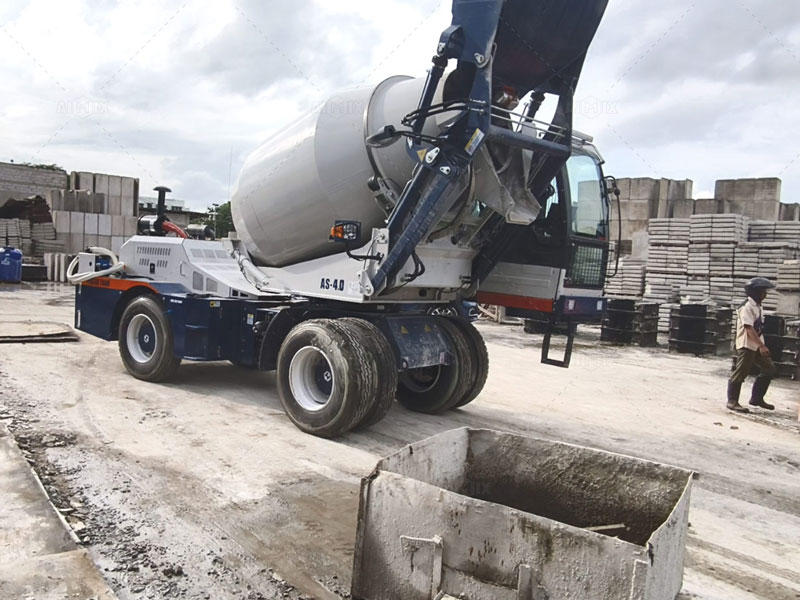Navigating the intricate realm of construction machinery, the fully automatic self-loading mixer truck stands as a testament to the ingenuity of modern engineering. As a vital component in the South African construction landscape, this versatile vehicle demands a nuanced understanding of its operation and handling. Embark on an exploration of the ten essential details that every operator must possess to harness the full potential of this remarkable machine.
Familiarizing with the Truck’s Anatomy
To commence the journey, it is imperative to delve into the comprehensive understanding of the truck’s anatomy. From the imposing size of the drum to the intricate hydraulic systems that power its movement, each element plays a crucial role in the seamless execution of the self loading mixer‘s duties. Familiarizing oneself with the location and function of the various controls, levers, and sensors ensures a seamless and efficient operating experience.
Mastering the Drum’s Manipulation
The heart of the self-loading mixer lies in the drum, a meticulously engineered component responsible for the thorough blending of the concrete constituents. Operators must develop a keen eye for the drum’s rotation speed, ensuring the perfect consistency and uniformity of the concrete mixture. Precise control over the drum’s direction and velocity is paramount, as it directly impacts the quality of the final product delivered to the construction site.

Navigating the Hydraulic System
The self-loading mixer’s prowess is fueled by a sophisticated hydraulic system, which powers the various functions of the vehicle. From the raising and lowering of the drum to the operation of the chute, mastering the intricacies of this system is essential for operators. Understanding the pressure requirements, flow rates, and maintenance protocols safeguards the long-term reliability and performance of the mixer.
Maintaining Optimal Load Distribution
The delicate balance of load distribution is a crucial consideration when operating a self loading mixer truck. Operators must meticulously monitor the weight distribution, ensuring that the vehicle’s center of gravity remains stable and that the load is evenly dispersed across the axles. This not only enhances the truck’s maneuverability but also safeguards the structural integrity of the vehicle, minimizing the risk of accidents or mechanical failures.
Calculating Payload Capacity
Navigating the intricate landscape of payload capacity is a critical aspect of operating a self-loading mixer truck. Operators must be well-versed in calculating the maximum weight the vehicle can safely accommodate, taking into account factors such as the drum’s capacity, the density of the concrete mixture, and any additional equipment or materials loaded onto the truck. Exceeding the payload limit can compromise the vehicle’s stability and performance, jeopardizing the safety of the operator and the surrounding environment.

Maneuvering in Tight Spaces
The self-loading mixer’s versatility is further highlighted by its ability to navigate the often-constricted construction sites. Operators must possess a keen spatial awareness and the dexterity to guide the massive vehicle through narrow access points, around obstacles, and into tight delivery spots. Mastering the art of precision maneuvering on self loading concrete mixer for sale South Africa is essential for seamless job site integration and efficient concrete distribution.
Ensuring Optimal Maintenance and Safety
The longevity and reliability of a self-loading mixer truck are inextricably linked to the diligence of its maintenance protocols. Operators must be well-versed in the recommended service intervals, lubrication schedules, and inspection procedures to ensure the truck’s peak performance and extended lifespan. Additionally, a deep understanding of safety protocols, from personal protective equipment (PPE) to emergency response procedures, is paramount to safeguarding the operator, the crew, and the surrounding environment.
Monitoring Operational Parameters
The self-loading mixer truck is a veritable treasure trove of operational data, and the skilled operator must be adept at interpreting and responding to the various gauges, sensors, and warning indicators. From engine temperature and oil pressure to drum rotation speed and hydraulic fluid levels, each parameter provides valuable insights into the truck’s overall health and performance. Proactive monitoring and prompt intervention can prevent costly breakdowns and ensure the uninterrupted delivery of concrete to the construction site.
Navigating Inclement Weather and Terrain
The South African construction landscape is renowned for its diverse and often challenging terrain, and the AIMIX self-loading mixer truck must be capable of navigating these conditions with ease. Operators must be well-versed in the vehicle’s capabilities when traversing steep gradients, soft ground, or inclement weather, adapting their driving techniques and load distribution accordingly. Mastering these skills not only safeguards the truck’s performance but also enhances the overall efficiency and safety of the construction project.
Fostering Seamless Collaboration
The successful operation of a self-loading mixer truck involves a harmonious collaboration between the operator and the broader construction team. Effective communication, coordination, and a shared understanding of roles and responsibilities are essential for ensuring the timely and efficient delivery of concrete to the job site. Operators must be adept at interpreting site plans, responding to project-specific requirements, and working in tandem with other heavy equipment operators to optimize the construction workflow.
By delving into these ten essential details, operators of fully automatic self-loading mixer trucks in South Africa can unlock the true potential of this remarkable piece of construction machinery. From the intricate workings of the drum and hydraulic systems to the nuances of load distribution and maintenance, a comprehensive understanding of these aspects is the key to delivering concrete with unparalleled precision, efficiency, and safety. As the construction industry continues to evolve, the mastery of this specialized equipment will remain a critical skill for those who aspire to shape the built environment of South Africa.